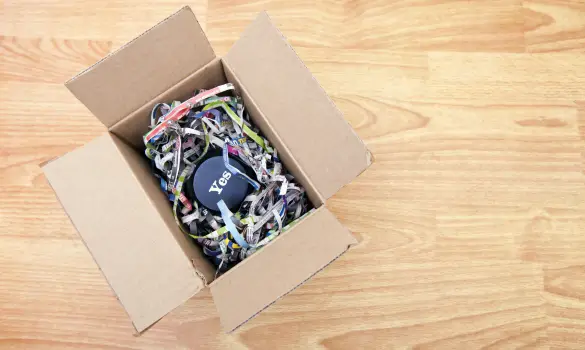Don’t know where to start when it comes to packaging your product? You’re not alone. Every business will have different needs of what to do with packaging. Still, there are some principles you can stick to if you want to increase your chances of coming up with truly effective packaging. Here are packaging rules to keep in mind when you want to move some serious product.
Stand Out
Perhaps you really admire a competitor’s wholesaler online packaging. Don’t emulate it; revolutionize it. Pinpoint the similar product you’d be willing to buy, and identify what on that package you could improve. When we make an effort to stand out, this doesn’t necessarily mean having the brightest, loudest packaging, either. One key feature, from the angles of the package itself to the logo, is enough to draw someone in.
Make It Identifiable
Look at your current packaging, or packaging concept. How would you describe it? If you described it to someone else who never saw it, could they envision what it looked like? While we want our packaging to be unique to our brand, and to stand out from similar products on retail merchandising, we must avoid overdoing it and muddling the message. The best brands barely need to put their name on their packaging. Consumers already know what it is and who produced it based on packaging alone.
If you want to make your packaging identifiable, make sure to put your best foot forward by focusing on packaging design. This step is crucial to attain a unique product packaging that best suits your product and your company’s branding and values.
Check the following tips to make your packaging identifiable:
- Consider putting your company logo or incorporating your theme or quote into your design.
- Check your competitors’ packaging and determine their strong and weak points. In this way, you will have some good insights on how to design yours.
- Talk to a product packaging design expert. Seek professional services to help attain your goals.
- Test your product packaging design before launching it. You can ask the feedback of your employees, friends, and relatives. Also, you can conduct a survey or interview. Ask a small population of loyal customers to check your new product packaging design.
Be Honest
Consumers burned by buyer’s remorse will never, ever do business with you again. How does this happen? Sometimes, the package promises them something they don’t get. We see this all too often with food and cosmetics. The picture of the cookie looks delicious and full of chocolate chips, but the cookies inside of the bag contain very few chocolate chips. Hair products that promise silky, frizz-free hair get discarded daily because they didn’t deliver. Be honest on your packaging.
Don’t depict the appearance and quality of your product more than what it actually is. Doing so will mislead and frustrate your customers. If this happens, they’ll not attempt to purchase from you again. So, it’s a big “NO” to use misleading package design. Create genuine and honest package design that clearly shows how your product looks like.
Complement The Product
Or, in many cases, be inspired by the product it contains. What makes your product what it is? The shape? The purpose? The packaging should reflect what is inside on a subconscious level. We see this all of the time with gender-specific products, and it really seems to work. Personal care items intended for men will have sharper angles and darker colors, while packaged goods for women will feature softer colors and fluid lines. Gender isn’t relevant to every product, but you want product and package to be a match on some level. If you goal is delivering happiness with your product, then the packaging should reflect that for everyone.
Complementing the product also involves product packaging. It’s important to source packaging supplies from a trusted supplier. There are important considerations when finding the best packaging for your product, including your budget, materials, packaging transportation, packaging design, and size.
Engage Your Audience
Who is buying this, and can they be drawn in by package alone? Companies like PTI plastic packaging develop packaging solutions all of the time that have been designed with someone specific in mind. Is your product a throwback of something a fan of vintage goods would like? Is it meant to attract green consumers? The target consumer should get the feeling that the product they’re looking at is especially for them.
Engaging your audience means creating a solid branding strategy. A solid brand requires a purpose that aligns with company values, story, audience, positioning, and personality. Remember that your product packaging plays a vital role in effectively communicating those elements to your target audience like millennials. Make sure that your packaging is clean, straight to the point, and clear to successfully engage target customers.
Meet Label Requirements
Furthermore, it is essential for businesses to meet label requirements for their product packaging design. Depending on your industry, you may have to meet certain customer standards. For example, the National Institute of Standards and Technology (NIST) mandates specific label requirements in the tech industry. On the other hand, some entities in the food industry require allergy labels. Commonly, you must note when your products contain allergens, such as milk, eggs, nuts, and shellfish. Additionally, you must label if your product could have come in contact with these items during manufacturing. Definitely, it is essential for businesses to meet label requirements for the most effective product packaging.
A lot goes into a spectacular product package. In addition to the features that help us sell the item, we have to consider cost and the level of protection it provides. If you’ve hit all of the right marks, you’ll never regret investing in the proper packaging for your product.
 Business First Family Business, Accounting, Finance, Investing, Marketing And Management
Business First Family Business, Accounting, Finance, Investing, Marketing And Management
